Vasilios Skepetzis
LFW-Beautified: A Dataset of Face Images with Beautification and Augmented Reality Filters
Mar 11, 2022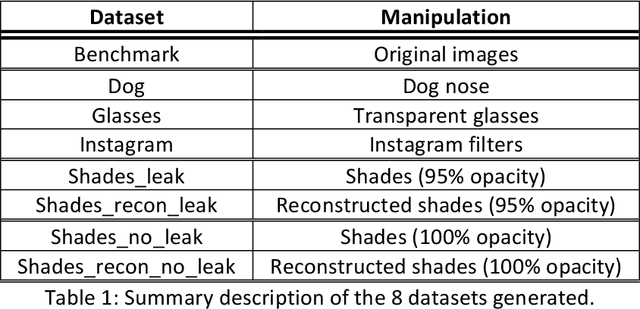
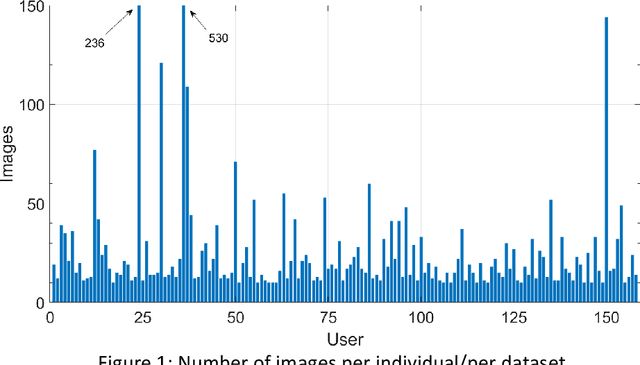
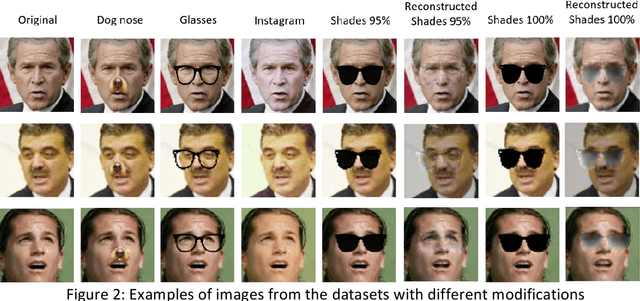

Abstract:Selfie images enjoy huge popularity in social media. The same platforms centered around sharing this type of images offer filters to beautify them or incorporate augmented reality effects. Studies suggests that filtered images attract more views and engagement. Selfie images are also in increasing use in security applications due to mobiles becoming data hubs for many transactions. Also, video conference applications, boomed during the pandemic, include such filters. Such filters may destroy biometric features that would allow person recognition or even detection of the face itself, even if such commodity applications are not necessarily used to compromise facial systems. This could also affect subsequent investigations like crimes in social media, where automatic analysis is usually necessary given the amount of information posted in social sites or stored in devices or cloud repositories. To help in counteracting such issues, we contribute with a database of facial images that includes several manipulations. It includes image enhancement filters (which mostly modify contrast and lightning) and augmented reality filters that incorporate items like animal noses or glasses. Additionally, images with sunglasses are processed with a reconstruction network trained to learn to reverse such modifications. This is because obfuscating the eye region has been observed in the literature to have the highest impact on the accuracy of face detection or recognition. We start from the popular Labeled Faces in the Wild (LFW) database, to which we apply different modifications, generating 8 datasets. Each dataset contains 4,324 images of size 64 x 64, with a total of 34,592 images. The use of a public and widely employed face dataset allows for replication and comparison. The created database is available at https://github.com/HalmstadUniversityBiometrics/LFW-Beautified
On the Effect of Selfie Beautification Filters on Face Detection and Recognition
Oct 20, 2021
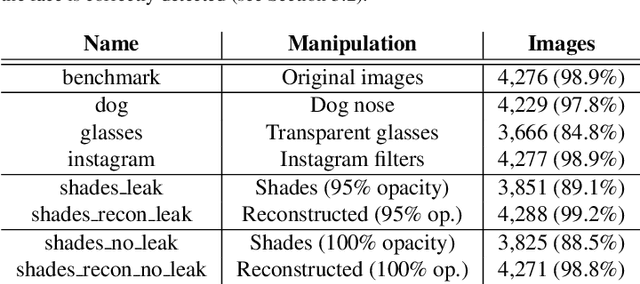
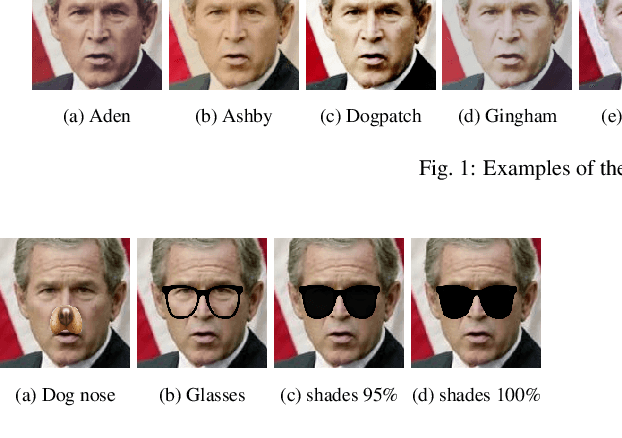

Abstract:Beautification and augmented reality filters are very popular in applications that use selfie images captured with smartphones or personal devices. However, they can distort or modify biometric features, severely affecting the capability of recognizing individuals' identity or even detecting the face. Accordingly, we address the effect of such filters on the accuracy of automated face detection and recognition. The social media image filters studied either modify the image contrast or illumination or occlude parts of the face with for example artificial glasses or animal noses. We observe that the effect of some of these filters is harmful both to face detection and identity recognition, specially if they obfuscate the eye or (to a lesser extent) the nose. To counteract such effect, we develop a method to reconstruct the applied manipulation with a modified version of the U-NET segmentation network. This is observed to contribute to a better face detection and recognition accuracy. From a recognition perspective, we employ distance measures and trained machine learning algorithms applied to features extracted using a ResNet-34 network trained to recognize faces. We also evaluate if incorporating filtered images to the training set of machine learning approaches are beneficial for identity recognition. Our results show good recognition when filters do not occlude important landmarks, specially the eyes (identification accuracy >99%, EER<2%). The combined effect of the proposed approaches also allow to mitigate the effect produced by filters that occlude parts of the face, achieving an identification accuracy of >92% with the majority of perturbations evaluated, and an EER <8%. Although there is room for improvement, when neither U-NET reconstruction nor training with filtered images is applied, the accuracy with filters that severely occlude the eye is <72% (identification) and >12% (EER)
 Add to Chrome
Add to Chrome Add to Firefox
Add to Firefox Add to Edge
Add to Edge